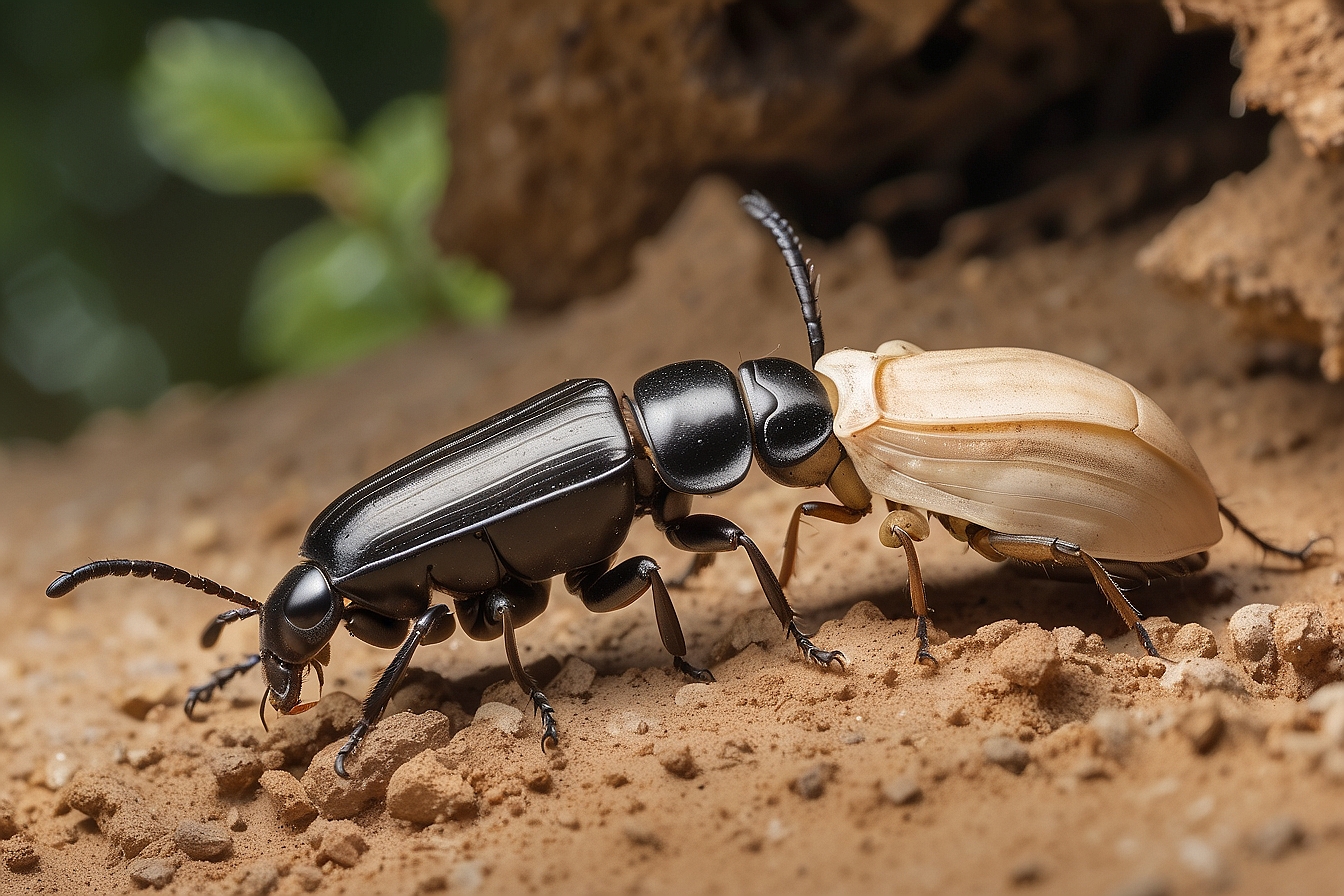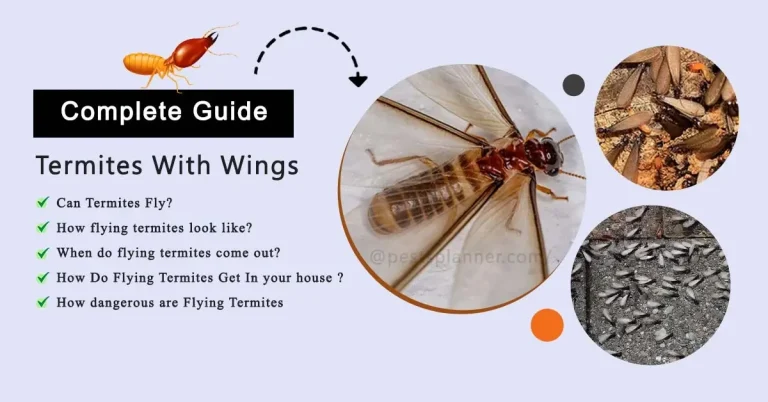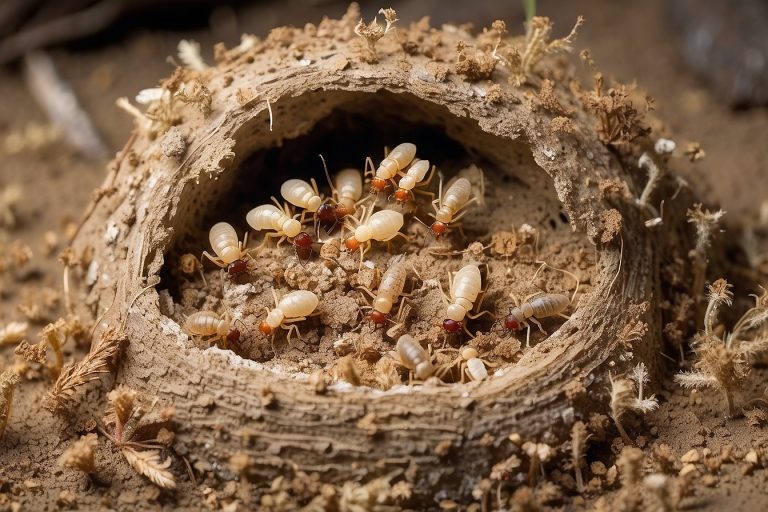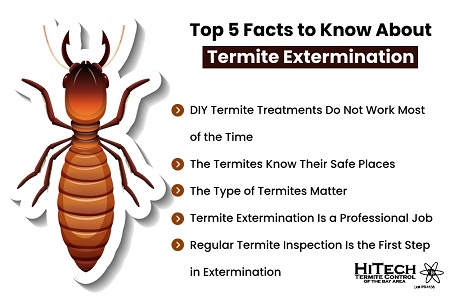Powderpost beetles vs termite: How to tell the difference

- An Overview of Powderpost Beetles and Termites
- Signs of Powderpost Beetles vs Termites
- Do Powderpost Beetles Bite or Spread Disease?
- How to Get Rid of Powderpost Beetles
- Do You Need Professional Powderpost Beetle Control?
- Protecting Your Home from Future Powderpost Problems
- Summary: Distinguishing Powderpost Beetles vs Termites
Wondering if you have an infestation of Powderpost beetles or termites? While both Powderpost beetles and termites can severely damage wooden structures, they have some key differences you’ll want to be aware of. Knowing how to identify signs of each infestation can help you determine which pest you’re dealing with and guide appropriate pest control measures.
An Overview of Powderpost Beetles and Termites
Powderpost beetles and termites may look and act differently, but they’re surprisingly similar when it comes to the type of destruction they can cause. Both of these common wood-boring insects feed on wood, slowly destroying beams, floors, furniture and other wooden elements in the process. If left unchecked, a serious powderpost beetle infestation or termite infestation threatens the structural integrity of homes and buildings.
So what’s the difference between these two hazardous pests? And why is it so important to know how to tell them apart? Let’s cover some key facts.
What Are Powderpost Beetles?
Powderpost beetles are a variety of small (1/8″-1/2″ long) wood-boring insects that tend to infest hardwoods inside homes and buildings. There are over 100 different species of Powderpost beetles, divided into two families:
- Lyctid Powderpost beetles
- Anobiid Powderpost beetles
The adult beetles lay eggs in cracks, pores and other small openings in wood surfaces. After hatching, the larva bore slowly and steadily into the wood, feeding on starches and sugars as they go. Their feeding activity creates a very fine, powdery sawdust that resembles flour. Over months or years, this larval feeding (not the adult beetles) causes extensive internal damage that significantly weakens wooden structural elements.
Once fully mature, the larva transform into adult beetles that emergence from round, pinhead-sized “exit holes” they create. The cycle then repeats, with adult females laying more eggs on or near wood to perpetuate the infestation. Left unchecked, Powderpost beetles will re-infest wood again and again, requiring pest control intervention to fully eliminate them.
What Are Termites?
Termites are eusocial insects that live in structured colony units with distinct castes – workers, soldiers, reproductive termites etc. While less than 10% of the 4,000+ known termite species cause damage to wooden structures, those that do pose a significant threat.
In the U.S, the main termite species that damage homes/buildings are:
- Subterranean termites
- Drywood termites
- Dampwood termites
Worker termites feed on cellulose sources like wood, slowly hollowing them out from the inside. While termite workers cause the damage, soldier termites defend the colony from threats. Each colony has a queen and king that reproduces, ensuring the colony survives and grows.
Termite workers feeding on an infested wood beam
Like Powderpost beetles, termites can severely compromise the integrity of wood if their damage is extensive. Letting subterranean termites access your home from underground or allowing Drywood colonies to persist unchecked in attics/walls is extremely hazardous.
Signs of Powderpost Beetles vs Termites
So how do you know if you have a Powderpost beetle problem or termites? Here are a few key differences in the damage they cause:
Sawdust-Like Powder
One of the hallmarks of a Powderpost beetle infestation is the presence of a very fine, powdery sawdust. This dust is created from the inside of wood as larvae slowly feed and tunnel through it.
You may find these powdery piles:
- On the floor underneath infested wooden elements
- Puffed out from tiny holes in wood
- Trapped inside small cracks/crevices
Conversely, termites do NOT create a fine powder. They produce wider pellets and debris that doesn’t resemble sawdust or flour.
Pinholes vs Mud Tubes
While the presence of small “pinholes” in wood may indicate exit holes from Powderpost beetles, termites create much larger tubes. These mud tubes allow termites to move safely between their underground colonies and wood sources above ground.
Mud tubes over foundation walls or pier blocks are a giveaway clue of subterranean termites in particular. If you break open these tubes, you may find worker termites inside.
Location & Conditions
Powderpost beetles and termites also differ in the locations and conditions where infestations occur:
Termites:
- Need moisture – attracted to water damaged/rotting wood
- Nest underground or inside walls/attics
- Form large colonies with caste structure
- Attracted to exterior wood like fences, decks, etc.
Powderpost Beetles:
- Prefer relatively dry, seasoned hardwood
- Commonly infest furniture, flooring, crates, trim
- Solitary pests that don’t form colonies
- Rarely found outdoors
As generalist feeders, Powderpost beetle larvae will infest new and old hardwoods, as long as starch/sugars are present. However, they usually avoid softwoods like pine or cedar. By contrast, termites readily consume a wider variety of wood types.
Do Powderpost Beetles Bite or Spread Disease?
While Powderpost beetles can damage your property, they do not spread diseases or directly harm human health. The adult beetles do not bite, sting or transmit pathogens. And unless you have an allergy, ingesting a bit of “wormy” Powderpost-infested sawdust is not dangerous.
However, the Frass these beetles create still poses some safety issues:
- Wood dust accumulation promotes mold/bacteria growth
- Compromises indoor air quality
- Can damage lungs if inhaled in large quantities
Plus, the structural instability Powderpost larvae cause by eating away wood from inside poses a safety hazard. Weakened wooden floor and ceiling beams, columns and other critical elements are at higher risk for collapse and injury.
For these reasons alone, it’s still vital to address any Powderpost infestation promptly. Never allow their damage to progress to dangerous levels.
How to Get Rid of Powderpost Beetles
If you confirm signs of an active Powderpost beetle infestation in your home or business, take action quickly! Here are your basic control options:
Fumigation
Whole structure fumigation is the most thorough treatment choice to eliminate an existing beetle problem. This involves tenting your home and pumping in high concentrations of sulfuryl fluoride gas for 24+ hours. As it permeates wood throughout the structure, it kills all life stages of Powderpost beetles and other pests.
Fumigation also deters future invasions by leaving residual activity within infested wood. Just be aware the process is expensive, legally complex (in some states) and requires temporary displacement from your home. Always hire trained, licensed pest control technicians to oversee fumigation safely.
Heat Treatment
Sustained heat of 120°F – 140°F also kills all Powderpost beetles inside wood. Specialized heat chambers or heating elements can slowly raise wood core temperatures high enough, for long enough durations, to achieve full mortality. This method avoids using pesticides and doesn’t require you to vacate the structure. But heat treatments also tend to be slow and quite costly.
Spot Treatments
For more limited infestations involving a few wooden items, pest control professionals can drill small holes into the infested material and inject targeted insecticides or wood preservatives. This kills larvae inside while preserving structural integrity. Combined with removing/sealing infested items, spot treatments help limit future beetle damage.
Preventative Sprays & Dusts
Applying borate-based sprays or dusts into wall voids, under floors or inside unfinished attics provides protection from future attack. These products soak into wood fibers over time, making them toxic for feeding beetle larvae. Using them along with vigilance to catch issues early is prudent.
Do You Need Professional Powderpost Beetle Control?
Some over-the-counter beetle foggers, sprays and dusts available online or at your local hardware store can offer adequate control IF you treat early enough. However, if dealing with anything beyond a minor, localized infestation, calling trained pest control experts is best.
Why work with professionals?
- They identify exactly which beetle species you have
- Pinpoint the full scope of damage using specialized tools
- Know which methods work against different Powderpost species
- Ensure wood replacement & repairs are done properly
- Provide effective, long term solutions like fumigation
No single treatment fits all scenarios. By leaving it to qualified experts, you give your home the best chances for complete, lasting relief from Powderpost beetles.
Protecting Your Home from Future Powderpost Problems
While eliminating an existing infestation is the first priority, prevention is also key. No matter what control methods you use initially, Powderpost beetles may still re-invade if conditions allow it. Here are some deterrent tips:
🔹 For homes with a vented crawl space or basement foundation, ensure adequate air circulation and avoid moisture accumulation. This makes the environment less hospitable for beetles.
🔹 Inspect secondhand wood furniture, flooring or other reclaimed wood for signs of infestation before bringing them home.
🔹 Seal any cracks in wood siding, doors, windows and trim to deny beetles entry access.
🔹 Varnish, paint or use protective sealants on exposed wood surfaces whenever possible. This slows beetle invasion.
🔹 Remove unused lumber or firewood stacks from direct contact with your home’s foundation. These often harbor beetles that later enter your structure.
🔹 Check attics, hardwood flooring, unfinished basements and other at-risk areas for early signs of damage 1-2 times per year. Finding issues quickly improves control success.
🔹 Install moisture monitors and maintain relative humidity levels below 50% throughout your home. Lower humidity helps deter infestations.
Following these powder post beetle prevention guidelines reduces chances of damage. But staying vigilant through routine monitoring is equally important. The earlier you can intervene, the less harm beetles will inflict long-term. If you DO encounter early evidence of a new invasion, contact a professional exterminator immediately for containment and elimination guidance.
Summary: Distinguishing Powderpost Beetles vs Termites
Here’s a quick recap of key traits of Powderpost beetles vs termites:
| Powderpost Beetles | Termites |
|---|---|
| – Produce very fine powdery frass | – Leave behind pellet-like debris |
| – Create tiny 1-2mm “pinholes” | – Build thick mud tubes |
| – Prefer seasoned, relatively dry wood | – Need moisture, conducive conditions |
| – Solitary insect that doesn’t form colonies | – Live in structured colonies |
| – Rarely found outdoors | – Nest underground and in walls |
As you can see, there are quite a few differences between Powderpost beetles and subterranean/Drywood termites. Being able to distinguish signs of an infestation can guide your pest control approach moving forward.
If you suspect you may have an active invasion of either pest, don’t delay – contact a professional exterminator or pest control technician right away for an evaluation. The earlier you intervene, the less damage these wood destroyers will inflict on your property long term.






